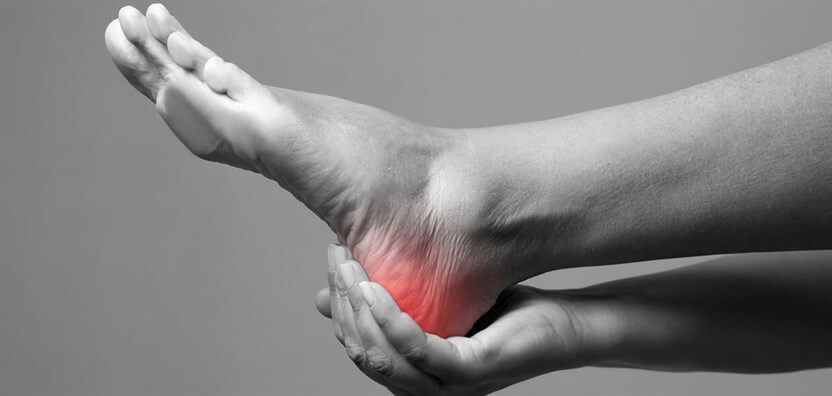Heel pain impacts nearly 2 million Americans each year and can lead to mild discomfort or even debilitating pain. Plantar Fasciitis is the most common condition of heel pain. It occurs when the long fibrous plantar fascia ligament along the bottom of the foot develops tears in the tissue causing pain and inflammation. As the person gets older, the plantar fascia becomes less elastic and more brittle and does not stretches very well. The fat pad on the heel becomes thinner and cannot absorb much of the shock caused by walking. The extra shock damages the plantar fascia and may cause it to swell, tear or bruise. Other common factors that lead to Plantar Fasciitis include:
- Obesity
- Diabetes
- Spending most of the day on feet / improper foot wear
- Being flat footed or having high arch


SYMPTOMS
Some common signs of Plantar Fasciitis implicate:
- Inability to walk properly with the affected feet
- Sudden heel pain while resting or during night
- Heel pain that persists beyond few days
- Swelling or discoloration of the back of the foot
- Indication of an infection including redness, fever or rise of body temperature
DIAGNOSIS
Proper medical examination by a foot and ankle surgeon is recommended in case any of the symptoms are observed. Diagnostic imaging studies such as x-rays or other imaging modalities may also be used to diagnose the different types of heel pain. Sometimes heel spurs are found in patients with Plantar Fasciitis, but they rarely cause pain. When they (heel spurs) are present, the condition may be diagnosed as Plantar Fasciitis/heel spur syndrome.
TREATMENT
Treatment of Plantar Fasciitis begins with short term rest to control the inflammation.
Physiotherapy includes exercises that stretch out the calf muscles to help ease the pain and assist with recovery. Anti-inflammatory medications also help to control pain and decrease inflammation. Putting an ice pack on the heel for 20 minutes several times a day also helps to reduce inflammation. Shoe inserts are also proved to be successful treatment of Plantar Fasciitis.
If the pain does not stop, an injection of cortisone can decrease the inflammation of Plantar Fasciitis. However, many physicians do not choose to inject cortisone because there may be potentially serious side effects with cortisone injections in the heel area. The two problems that cause concern are fat pad atrophy and Plantar Fascial rupture. Though both the problems are quite rare, yet they can cause worsening of heel pain symptoms.

